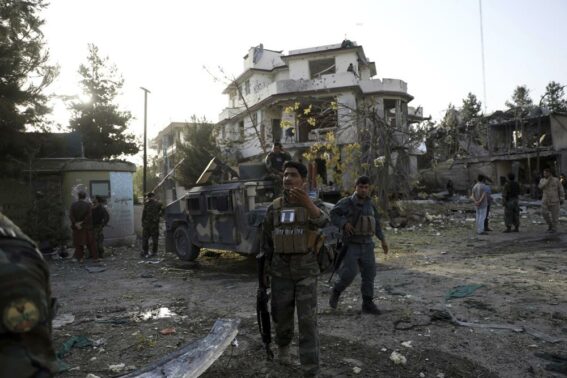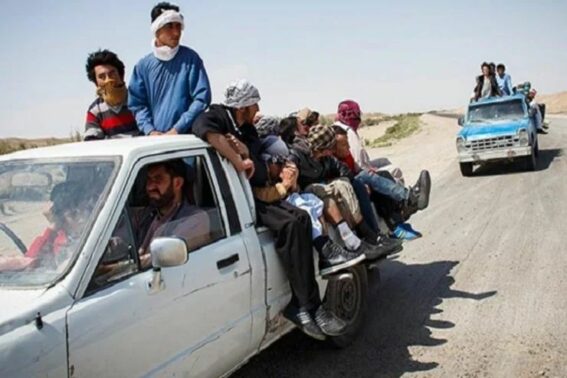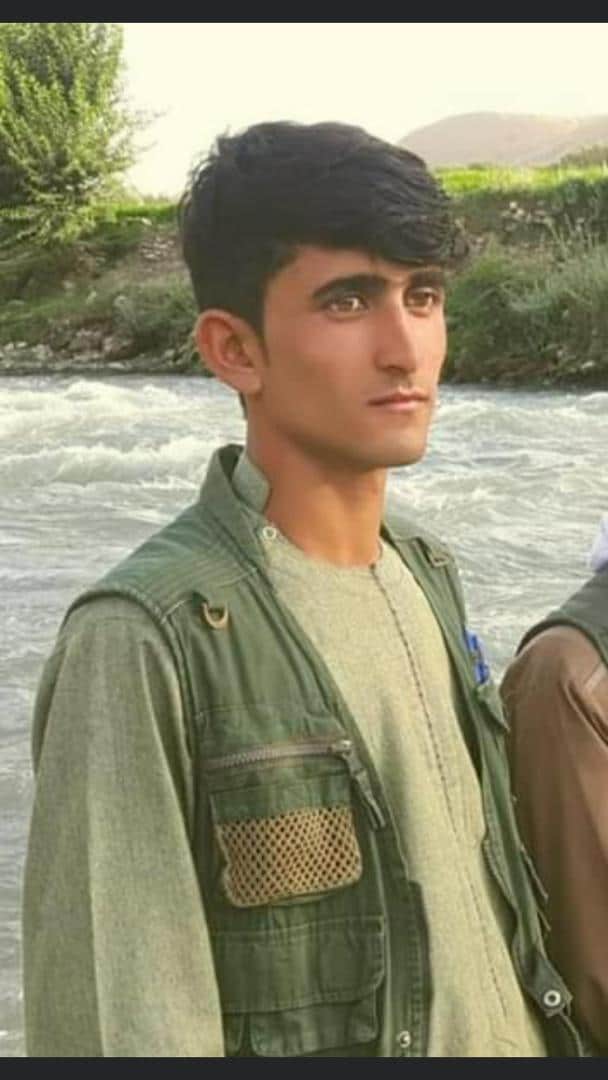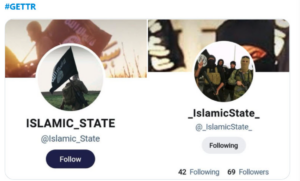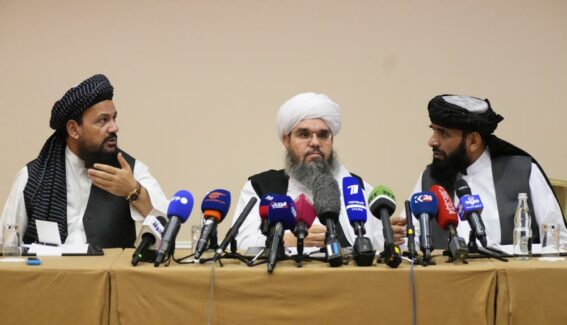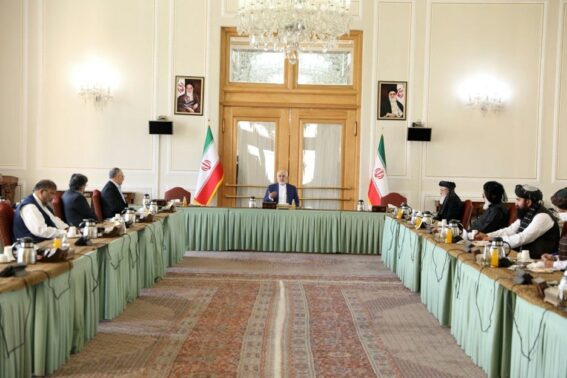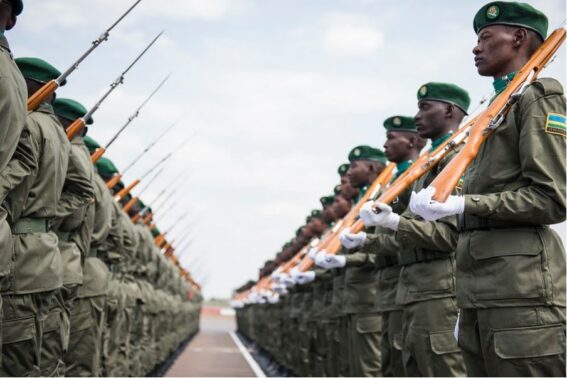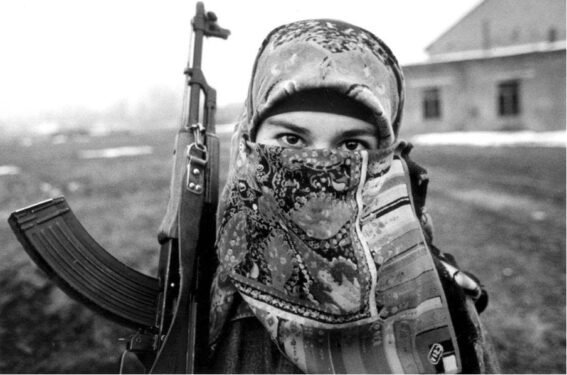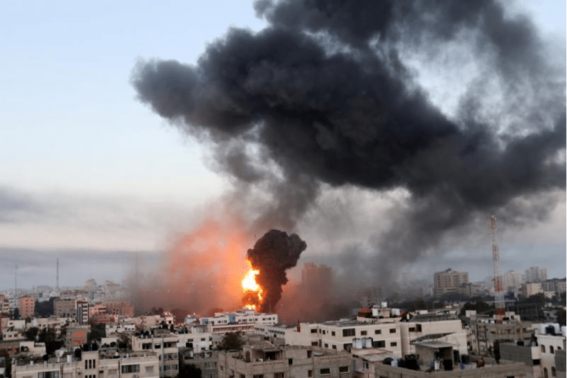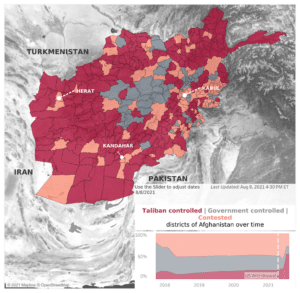
Source: Long War Journal (control areas as of Aug. 8) By Scott Reinhard
In recent weeks, the Taliban have made unprecedented gains that continue to threaten Afghanistan’s stability. This furthermore increases the likelihood that it will become a haven for international terrorists.
[supsystic-gallery id=null position=center]
From strikes against prominent figures to military offensives that have resulted in the capture of three provincial capitals, the situation had become dire. So much so, that the British and American Embassies in Kabul have advised their citizens to evacuate immediately. This is in anticipation of further violence to come.
American and Afghan planes continue to bomb the Taliban in attempts to curbs its advances, with the Ministry of Defence claiming hundreds of fighters dead. Militia fighters, led by former mujahedeen commanders like Ismail Khan from Herat, have augmented government forces and pledged to fight the Taliban for their homeland. While the situation in Afghanistan deteriorates, the Taliban continue to stall negotiations in Doha, while spokesman Suhail Shaheen sanctions the violence as the alternative to the current government’s rule.
The four major events of last week have serious implications for Afghanistan and foreshadow serious consequences if the Afghan government fails to counter the Taliban’s gains.
On August 3rd and 6th, the Taliban demonstrated their ability to penetrate deep into Kabul. This was shown with attacks on prominent government officials. Although Defense Minister, Bismillah Khan, escaped unharmed by the two vehicle-borne IEDs and subsequent gunfight that erupted late on August 3rd, eight people were killed and 20 injured in the battle. This is particularly concerning because the Sherpur neighborhood, where the minister resides, is home to other prominent government officials and is one of the most secure areas in Kabul.
As the Taliban make quick gains, these brazen attacks on officials are only likely to increase as the movement continues to gain momentum in the face of US airstrikes and pressure from Afghan soldiers. Unfortunately, the Taliban’s next attack succeeded, killing the top media and information officer in a roadside ambush in Kabul. Dawa Khan Menapal served as Ashraf Ghani’s spokesman and was lauded by US ambassador Ross Wilson as ”a friend and colleague whose career was focused on providing truthful information to all Afghans.”
Although covered little in comparison to these major attacks, the Taliban also killed the district governor in Kabul, Sayed Abad. These successful and failed assassinations highlight the Taliban’s lethal reach and disinterest in achieving a shared political settlement in Afghanistan. They serve not only to highlight the government’s inability to protects its leader,s but also to deter Afghan’s from supporting and participating in the political process. The military gains in Herat, Lashkar Gah, and Nimruz only serve to strengthen their resolve.
Beyond the asymmetric tactic used by the Taliban in Kabul and areas firmly held by the Afghan government, fighting in Helmand, Kandahar, and other provinces has intensified. In the last few days, the Taliban have captured several provincial capitals, Sheberghan, Laskar Gah, Zaranj, Kunduz, Sar-e-Pol, and Taloqan. Their victories at Taloqan are especially surprising because northern Afghanistan provided some of the most brutal resistance to their rule in the late 1990s. Subsequently, it became the launchpad of US operations shortly after 9/11.
Amid these offensives, US and Afghan planes continue to batter Taliban positions, killing hundreds of fighters and causing fires throughout various cities. In a notable strike, a B-52 bomber killed a group of over 200 Taliban fighters in Sheberghan, Jowzan Province. Many have reported the bodies of women and children in these cities, whose fates may be connected to gross human rights violations by the Taliban. Some have also reported that the Taliban went door-to-door, asking for those who helped coalition forces and killing them. This was in direct contradiction to their commitments of protecting those they saw as traitors of Afghanistan and Islam.
These extrajudicial killings of former interpreters, without due process and the targeting of civilians, greatly complicates the Taliban’s standing in the world. This furthermore reduces the possibility of peace in Afghanistan.
The international community should hold the Taliban accountable for these actions and deter the movement from similar violations through sanctions and other political measures. The recent victories by the movement appear to prove some intelligence assessments correct, mainly being that Afghanistan could fall in as little as six months to the Taliban.
However, Afghans should continue to fight, lobby for more international support, and work to bring essential services to people to deter them from joining the Taliban. The US should increase the number of evacuation flights and airstrikes in the country. Militia leaders should also mobilize and recruit willing Afghans to help government forces resist Taliban progress and preserve two decades of progress for future generations.

